The Complete Guide to Lean Process Improvement and How to Implement It
Last Updated on April 3, 2024 by Owen McGab Enaohwo
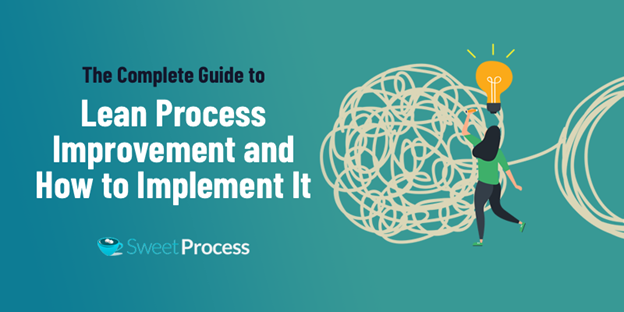
Ask any business leader or read any article on why companies fail, and you’re likely to hear about poor cash management, bad market fit, hiring the wrong people, or weak leadership.
Inefficient processes are rarely cited as a reason why a company is falling behind or failing, even though they are usually the main reason why they do.
Ineffective processes are costing businesses a lot of money—almost a third of their income, if some studies are to be believed.
For example:
- Tech teams spend almost 30% of their time on finding data and menial tasks rather than conducting analysis.
- 64% of a sales rep’s counted hours are spent doing things that don’t contribute to the company’s bottom line.
- 50% companies also spend between $5 to $25 on manually processed invoices.
That’s a lot of company earnings going down the drain and something that lean process improvement can put a stop to.
In fact, the relevance of lean as a way of working became all too evident during the 2020-21 Covid pandemic as companies were forced to make do with less demand and uncertain supply chains.
Let’s take a closer look into what lean process improvement really means and how you can use it to keep your company a lean, mean machine.
The Complete Guide to Lean Process Improvement Chapter Index
Chapter 1: What is Lean Process Improvement?
Chapter 2: How Lean Process Improvement Came About
Chapter 3: The Eight Deadly Wastes That Lean Process Improvement Eliminates
Chapter 4: Why Lean Sounds So Familiar
Chapter 5: Types of Lean Process Improvement Methodologies
Chapter 6: The Three Key Anchors of an Effective Lean Campaign
Chapter 7: How to Get Started With Lean Process Improvement
Chapter 8: Four Cloud-Based Tools You Can Use to Implement Lean Processes in Your Company
Chapter 9: Common Misconceptions About Lean Process Management
Chapter 10: Three Lean Process Case Studies
Conclusion
Chapter 1: What is Lean Process Improvement?

In lean process improvement, excess processes and steps are treated as burdens to be trimmed away.
Lean is best thought of as a philosophy rather than a hard and fast set of facts and techniques in a box. The objective here is to eliminate as much waste as possible to provide maximum value to the customer as efficiently and effectively as possible.
Lean process improvement starts with the customer: it first tries to define value, and then creates processes that best cater to it while keeping resource and time consumption down to a minimum.
Since consumer requirements and demands are constantly changing, lean process improvement treats all associated business processes as evolving entities rather than fixed constants. Managers must strive to continuously find ways to deliver greater value by reducing the number of steps required to do so.
Here’s an awesome video that showcases how lean process improvement works by using a house construction project as an example:
Even though process improvement has been part of business management for some time now, lean differs from other methods in one key way.
Standard business process management sees each department as part of a whole and optimizes them one at a time. Standard initiatives also treat process improvement as singular tasks that are carried out if necessary.
Lean process improvement techniques, on the other hand, see the entire value chain as a continuous flow, like a river. The departments are treated as tributaries feeding into the river, which ultimately leads to the market.
The emphasis here is to remove as many impediments as possible. In a true lean process, all actions have to add value to the final product. To this effect, a company committed to lean processes must strive to reduce costs, including labor, time, space and capital.
Chapter 2: How Lean Process Improvement Came About

Lean philosophy owes its origins to a number of different methods, all spread out over the last century. While Ford and Toyota are generally considered the pioneers of lean manufacturing (and rightfully so), we can trace the idea back to mid-15th century Arsenal, Venice.
Established in 1104, the Arsenal was tasked with producing hundreds of ships for the Venetian Navy during its Mediterranean campaign. The shipbuilders came up with the idea of using interchangeable parts that could be used in different classes of ships, greatly speeding up the overall construction.

Galleys were assembled and then (literally) flowed along a channel where each department added its output. By the next century, the Venetian Arsenal had become so efficient at shipbuilding that it could finish an entire galley within an hour. Other countries soon began emulating their methods and flow-based production became common practice.
Although advanced for its time, the Venetian process was held back by the tools of its time. It wouldn’t be advanced further until the early 20th century when Henry Ford applied it to his automobile manufacturing efforts.

In 1913, Ford combined interchangeable parts with standard operating procedures, all working on a conveyor belt, which we now call an assembly line. Ford departed from the tradition of using general purpose machines, which created parts that had to be cut, grinded and hammered into place by technicians.
Instead, he came up with specialized machines that made perfectly fitting parts that could be put together with minimal revision. The machines were installed in strategic locations along the production line to bring down time and cost. Instead of the hours or even days it took for parts to reach the assembly lines before, Fords usually took a few minutes.
Even though Ford had revolutionized car manufacturing, his methods were limited to singular models with minimal optional features. He could also only make them in one color, hence his famous quote: “You can choose any color as long as it’s black.”
While Ford was busy revolutionizing the automobile industry, there was another silent movement in the works. Sakichi Toyoda, the son of a farmer and successful carpenter in Japan, had founded Toyoda Loom Works, which manufactured weaving machines.
A prolific inventor, Toyoda had come up with a loom that would automatically stop when a yarn would break. This was the first instance of industrial automation (or jidoka) that would define much of the 20th century.
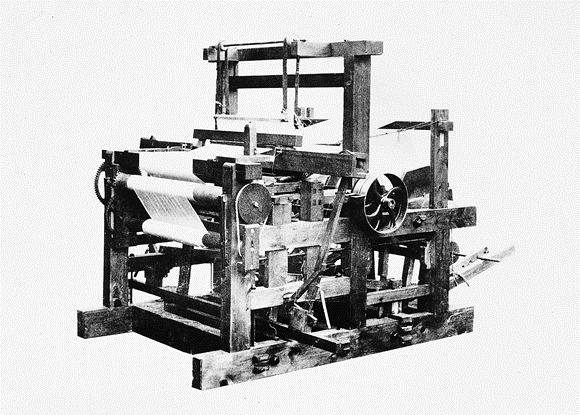
In 1937, Sakichi Toyoda’s son, Kichiro Toyoda, founded the automotive division of Toyoda Loom Works, which we now know as Toyota Motors. Kichiro brought Ford’s assembly line to his father’s jidoka philosophy. But he went further.
Being obsessed with process refinement, he created kaizen (continuous improvement) workshops to eliminate muda, or waste, from the company processes. Toyoda identified seven types of muda that the company should look out for (more on this later).
Following the Second World War, the demand and resource crunch in Japan meant that Toyota couldn’t afford to have product defects corrected post purchase. The company began to aggressively push for eliminating product problems during production.
In the 1950s, Kichiro Toyoda stepped down as chief executive and was replaced by Taiizo Ishida who, with the help of Eiji Toyoda (Kichiro Toyoda’s cousin) and Taichi Ohno, reorganized the company. They introduced the just-in-time manufacturing method, which uses real demand to determine production rather than forecasts.
It took over a decade for Toyota to refine and implement its ideas across all its factories. Now known as the Toyota Production System (TPS), the techniques have been modified and used across a variety of industries like health, FMCG, IT, oil and gas, and more.
The word “lean” itself wouldn’t be coined until 1991, when it was first used in the book The Machine that Changed the World by Daniel T. Jones, James P. Womack, and Daniel Roos of MIT.
Even though focused heavily on TPS, lean isn’t restricted to it and can encompass any philosophy, technique, or technology that eliminates waste and promotes systemic efficiency.
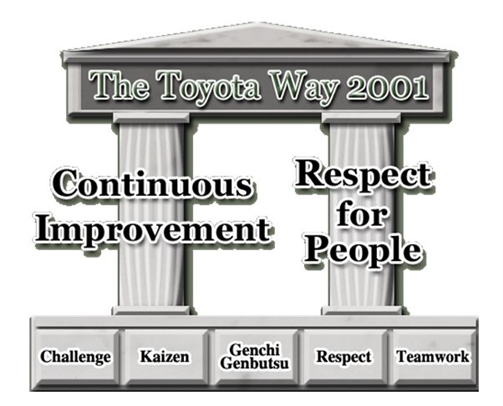
One criticism the book directed at TPS was that Toyota’s ideas were more concerned with economic progress and efficiency, with little regard for the people who enabled the processes. Toyota addressed these and more concerns in a new manifesto titled The Toyota Way 2001 which declared continuous improvement and respect for people as its two main pillars.
Chapter 3: The Eight Deadly Wastes That Lean Process Improvement Eliminates
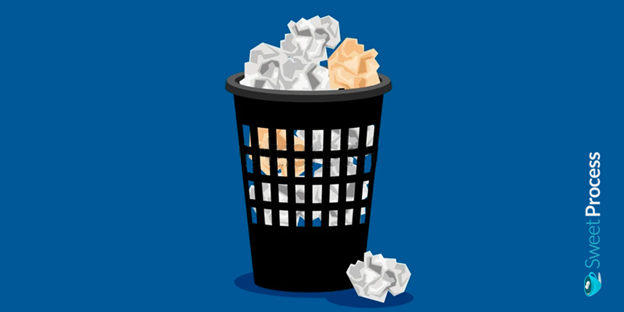
Waste reduction is what TPS or any lean system is built around. Three types of wastes are identified in Toyota philosophy:
- Muda: Pure, or lean, waste. Muda is any waste that can be quantified and uses up resources.
- Mura: Waste caused by unpredictable or chaotic processes that lead to uneven production.
- Muri: Waste due to overburdening either people, machines or processes.
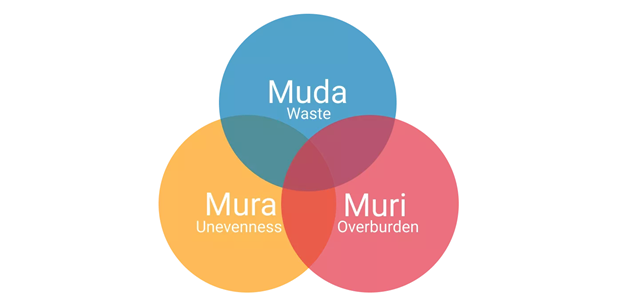
Even though Toyota has stuck with seven types of wastes, other methods have broken its categories down still further.
Muda distinguishes between necessary waste, or non-value adding processes that cannot be avoided, and pure waste, which are processes that can be safely eliminated. TPS identifies seven types of wastes, plus one that was added later:
Defects
Defects require significant resources and time to fix if they are discovered after the customer has purchased the product. A defective product may lead to complaints, expensive recalls, unpredictable inventory, and can damage your company’s reputation.
Reasons for defective products include poor design, bad material selection, improper documentation, lack of skilled workers, and large variety in inventory. Defects are best detected during the production process.
Defects can occur because of:
- Ineffective or incoherent processes.
- Too many product redesigns.
- Bad quality control.
- Lack of process and procedure documentation.
Overproduction
When a company over-produces unneeded items, they clog up the supply chain and cause downtimes. Overproduction also leads to inventory swells which can cost a lot to maintain and cause more work than needed. Since oversupply puts pressure on manufacturing, product defects may multiply and go unnoticed.
Overproduction is typically caused by:
- Not understanding market demand and poor forecasting.
- Not knowing how much surplus inventory the company can realistically keep.
- Having one manufacturing unit be more efficient/productive than its dependents down the value stream.
- Using inefficient production processes.
Overprocessing
A company’s overprocessing if its value delivery systems have more steps than needed. Compared to other errors, overprocessing is more subtle and can creep in unexpectedly.
The only way to avoid overprocessing is to have a thorough understanding of your customer’s demand. Working backward from your customer’s requirements can help you identify useful and wasteful processes.
Excessive processing can come in the form of:
- Manual invoicing when automation is available.
- Using items with precision or capacity not needed.
- Over-analyzing processes.
- Adding more features in a product than needed.
Motion
Moving stuff and people around costs money and time. Even the most trivial of movements can add up to significant volumes of work that amount to nothing, leading to waste. In lean philosophy, motion refers to any movements or actions carried out by people, equipment or machinery.
Process mapping can help you understand all aspects of work done within your company’s premises. Optimal facility layout can promote efficient movements that help shorten gaps between manufacturing and assembly areas.
Essentially, proper space utilization can help a company leverage its resources to the fullest, which is what reducing motion waste accomplishes.
Motion waste can be caused by:
- Inefficient workspace layout.
- Poor production planning.
- Long production processes.
- Shared resources.
- Lack of communication.
Transportation
While motion covers transportation as well, lean is a category in itself. Transportation waste can occur between production units, factories or facilities located between states and countries. Think of it as a macro-version of motion waste.
Transportation waste can cause excessive fuel consumption, lead time delays, poor supply chains and wasted man-hours. Value stream mapping can help overcome transportation errors by identifying routes that can be shortened or by moving facilities to more optimal locations.
Transportation errors can be caused by:
- Different production speeds between multiple facilities.
- Sending goods through high-traffic areas.
- Large order volumes that the company’s delivery systems cannot handle.
- Multiple storage locations.
Inventory
Sufficient inventory is required to not only fulfill existing orders, but cater to expected ones as well. However, maintaining inventory comes with its own set of costs. From renting storage facilities to electricity, movement, and asset value depreciation all need to be factored in before deciding how much inventory is needed and at what levels it will be considered a waste.
Inventory waste can come in the form of parts waiting for assembly, excessive work in progress, or even products waiting to be shipped. Unwanted inventory can be an offshoot of overproduction or overprocessing and requires keen insight into customer demand, market dynamics and process efficiency to be eliminated.
Key reasons for excess inventory include:
- Excessive buffer stock to meet unrealistic forecasted demand.
- Needless features in products requiring more parts.
- Unpredictable transportation.
- Defective parts and/or products.
Waiting
Idle time is time a company is paying for but not getting any output from. Suffice to say, waiting can quickly become very costly if left unchecked. Time-based wastes can happen either if people are waiting for parts to show up at their workstations, or if machines are sitting unused.
Waiting isn’t a problem in itself. It is a symptom of other systemic problems. It can occur because of:
- Poor transportation networks.
- Over- or under-production.
- Long or inefficient processes that don’t flow well.
Unused talent
Besides the seven traditional wastes that lean process management deals with, wasted talent was added later to account for unused skills. When employees possess skills that aren’t utilized, companies fail to harness their workforce’s full potential, leaving potential ideas and earnings on the table.
By leveraging each employee’s talents to the fullest, companies can find new ways to provide value, cut waste across the board and enable organization-wide growth.
Some symptoms of unused talent are:
- Excessive hierarchy, leading to a stifled work environment.
- Poor communication between management and workforce.
- Lack of or one-dimensional performance evaluation.
- On-ground staff not being incorporated into company decision making.
Chapter 4: Why Lean Sounds So Familiar
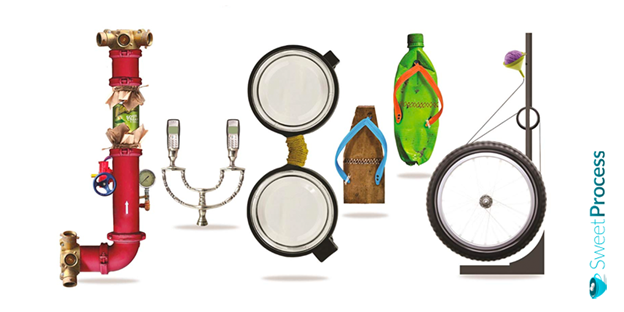
Toyota, Ford, et al. may have created a formalized structure in which to study and implement lean processes, but the idea itself is rather fundamental. Being scrappy and doing more with less is something cultures across the world expound and examples can be seen in our daily lives. Many such cultural artifacts have taken on lives of their own and have become informal problem-solving structures.
It’s important to note, however, that while such quick problem-solving methods are directed at the same goal that lean process improvement is, they both are fundamentally different.
While lean attempts continuous improvement through efficiency, informal problem-solving usually is more myopic and deals with the here and now with little regard for how the solutions may play out over time.
That being said, informal problem-solving still serves as a valid reference point to illustrate how effective lean can be. Some of the most popular such examples include:
Jugaad (India)
The word “jugaad” is a Hindi word that most Indians are well familiar with and refers to innovative solutions implemented with limited resources. Essentially, a jugaad is any solution that bends the rules, gets things done and almost always uses items that were never intended for the problem they are used to address.
Even though the philosophy of jugaad is commonplace in India, the COVID-19 pandemic really took it to the next level. People began to find novel ways to get through their day while maintaining social distancing.
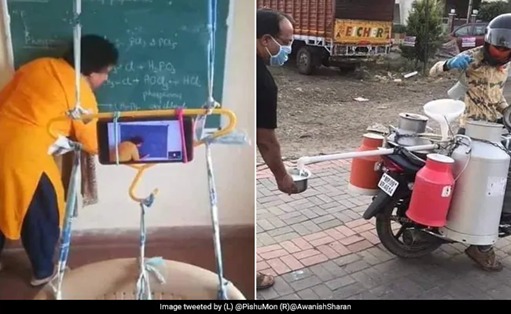
As it exemplifies resourcefulness and creativity, jugaad has jumped from being a simple streetsmart way of solving problems to a management principle. It has even been used to create highly resourceful and efficient enterprises.
The Dabbawalas, which is a social enterprise in Mumbai dedicated to helping people get fresh home-cooked meals at their workplace, is one such example. The service used a network of more than 5,000 children who delivered 200,000 food boxes per day without any IT infrastructure or fixed transportation methods. Forbes magazine awarded the Dabbawalas its Six Sigma certification in 2001 for their efficiency and accuracy.
Jury-rigging/Macgyvering (USA)
Jury-rigging started off as a verb in the navy during the late 18th century. When a ship was dismasted, a replacement mast was installed instead. Sometimes, items other than a mast, like a spar, or spinnaker pole, had to be used if a main mast wasn’t available. The term jury-rigged thus caught on as a verb for makeshift repairs or built using unorthodox methods.
Jury-rigging has become synonymous with creative problem solving using everyday items. Nowhere was this more visible than in the 80s television show MacGyver in which the protagonist used everyday items to create improvised but effective solutions.
So popular was the show and its fundamental premise that “macgyvering” became a part of the English lexicon, meaning simple, elegant solutions for complex problems using everyday resources.
One of the best examples of macgyvering happened before the show even went on air during the Apollo 13 mission. The doomed spacecraft made it back to Earth primarily because of ingenious improvisations that the engineers at NASA and the astronauts came up with.

In one instance, when CO2 levels began to climb in the command module, the astronauts (under the instructions of the engineers at Houston) made a CO2 scrubber from duct tape, plastic bags, hoses and flight plan covers.
Life-hacks
Life and productivity hacking has been an internet staple for over a decade now. “Hacking” essentially means using everyday items in creative new ways to get more value out of each resource. The idea quickly caught on and soon enough, we had thousands of hacks pouring in from all over the world.
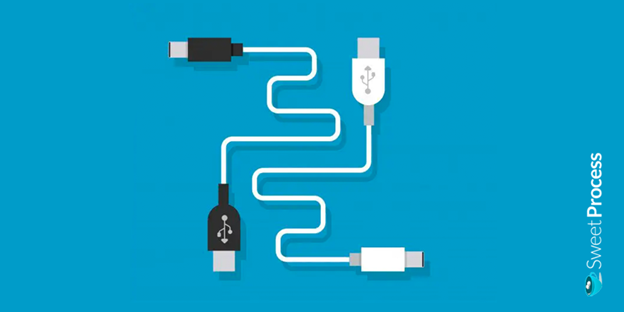
While quite clever and productive from a lean perspective, they work at the top of the funnel. Ideas such as these are what kaizen workshops attempt to come up with.
However, such solutions only make sense if they can be turned into procedures, policies and processes that consistently add value to a company’s supply chain in some meaningful way and can be built upon in the future.
Let’s take a look at some of the most popular lean process improvement models currently being utilized that you can use to turn your company’s ingenuity into productivity.
Chapter 5: Types of Lean Process Improvement Methodologies

The Toyota Production System has led to a number of different productivity models over the years. While some are part of it but have evolved into separate process refinement tools, the TPS has also inspired new paradigms that have become very successful.
Just-in-Time (JIT)
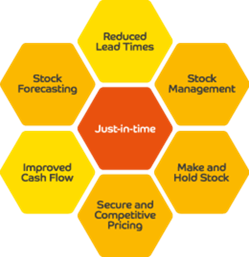
JIT applies the lean principle to inventory management. The core concept in JIT is to bring in raw materials from suppliers only when they are needed, thereby reducing warehousing and transportation costs.
The core objective of JIT is to promote efficient flow of raw materials, but it carries significant risk as well. A good example of JIT manufacturing is a company that makes bespoke custom shoes. Since the shoes are made after a customer places their order, the company can buy materials and parts from its suppliers post purchase.
Implementing JIT in mass manufacturing is a lot trickier though. Since only enough raw material to meet demand is to be stored, accurate sales forecasts and good vendor/client relationships become central to implementing JIT. While Toyota popularized the idea, the company still took over 20 years to perfect JIT.
Takt Time
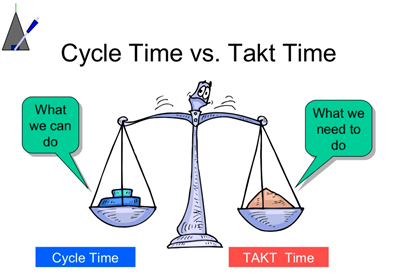
Closely related to JIT is takt time, which is a management tool used to measure the time interval between the start of production of one product and the start of production of the next. In Japanese, takt time is referred to as Takuto Taimu, which is borrowed from the German word Taktzeit, meaning cycle time.
Takt time is calculated by dividing the total time available for work divided by the number of products demanded. For example, let’s assume a customer places an order for 40 products in a week. If the company has a 40-hour work week, then it has one hour to complete each product.
Before settling on an ideal takt time, the company must also factor in machine downtime, transportation time, and process-related problems. If a company is providing parts to multiple assembly lines, then each line can have its own takt time depending on demand.
Heijunka
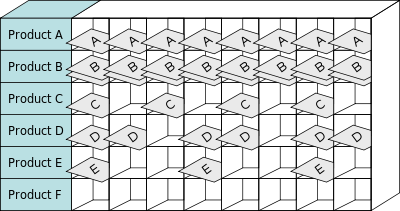
Heijunka means leveling in Japanese and refers to flattening the production curve to more manageable levels. A fundamental tenet of TPS and lean manufacturing, Heijunka primarily concerns with mura waste in lean. It attempts to remove uncertainty from production caused by a dynamic market, varying amounts of time taken to produce different parts, and human errors.
An example of Heijunka: let’s say a company consistently receives 400 orders from a customer every week. The weekly tally includes 100 items on Monday, 50 on Tuesday, 50 on Wednesday, 150 on Thursday and 50 on Friday.
While matching the daily production output to the orders may seem efficient, it also leads to uneven production throughout the week. The company may instead choose to produce 100 items every day Monday through Friday and meet its weekly production quota more evenly.
Poka-Yoke
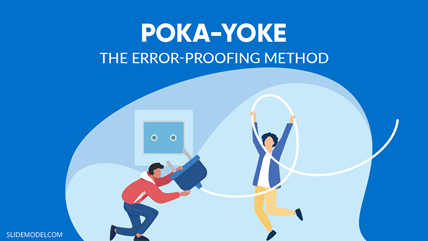
Another product of TPS, poka-yoke was coined in the 1960s by Toyota engineer Shiego Shingo. Initially, the term was boka-yoke, meaning fool or idiot-proofing, but was later changed to poka-yoke given the former’s derogatory implication.
Poka-yoke encourages people to learn from their mistakes in order to make successive attempts more efficient and productive. The product and production system are then redesigned to address those errors right at the start. In this sense, poka-yoke serves as a behavior-shaping constraint, and is central to TPS as it leads to better output at a faster rate.
A car with a manual transmission in which the clutch needs to be pressed before it can start to avoid any unwanted jumps or movement if it was in gear is an example of poka-yoke in action.
Likewise, microwaves and washing machines requiring the door to be closed before they can start, magnets in a grain processing plant and light curtains in factories that switch off dangerous machines when someone is near are all examples of poka-yoke.
5S
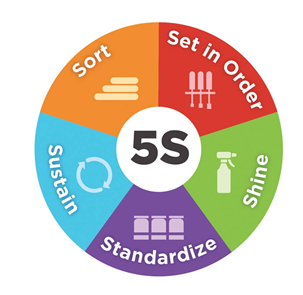
5S is a lean methodology that tries to create a safe, organized and uncluttered workspace. Its driving rationale is that an organized work environment leads to higher productivity and lower waste. The 5Ss’ stand for the five principles of organization, each of which starts with an S.
These are:
- Seiri: Which means to segregate needed tools and parts from unneeded ones.
- Seiton: Meaning to organize all the parts and tools for easy identification and use.
- Seiso: Means to clean up after a work is finished.
- Seiketsu: Which means to carry out seiri, seiton, and seiso every day to keep the workspace clean.
- Shitsuke: Meaning to strive to create a habit out of each of the four Ss’.
5S examples in the workspace include color-coding tools to make them easier to find, organizing all the tools in kits for easy reach, and floor labeling to direct workers to the right stations.
Kaizen
A Japanese term meaning “continuous improvement,” or “change for the better,” Kaizen is the core philosophy of TPS. Through Kaizen, a business can progressively become better and more efficient over time by learning from its mistakes, creating better processes and removing waste from its value chain.
Instead of going for massive, sweeping changes at one go, Kaizen focuses on small, incremental improvements that snowball into bigger refinements. The philosophy states that there is no end to perfection and that any process, no matter how efficient currently, can be improved upon. To this end, Kaizen requires top-to-bottom involvement, personnel discipline, teamwork, good morale and a commitment to quality.
Kaizen typically uses PDCA (plan-do-check-act) cycles to achieve its end. The company starts by planning the change process and letting everyone know how it will play out. The changes are then implemented and checked for results. If the outcome is satisfactory, the act stage turns the changes into standard practice.
Lean Six Sigma (DMEDI)
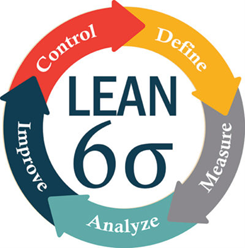
The above-mentioned lean process improvement methods are an integral part of the TPS. Six Sigma, on the other hand, offers a counter approach to lean. Instead of targeting waste as traditional lean process improvement does, Six Sigma is more concerned with removing process variations and reinforcing process control through data-driven methods.
The idea behind Six Sigma was developed by the American physicist and statistician Walter Shewhart who based it on the work of German mathematician Carl Fredrich Gauss. As per Shewhart, Six Sigma implies where a process needs to be improved.
The objective here is to bring an operation up to a six sigma level. Any operation that deviates three sigmas from the mean needs to be improved with one sigma being one standard deviation. A six sigma performance level can reduce defect rate to 3.4 errors per one million opportunities.
Over time, lean and six sigma have been combined to achieve even better results. Lean Six Sigma therefore uses the best of both methods and offers a greater variety of tools to clean up your processes.
Lean six sigma is also known as DMEDI, which stands for:
- Define: The problem is defined by identifying processes that deliver value to the client.
- Measure: Metrics required to measure the effectiveness of solutions are decided.
- Explore: Potential solutions are proposed and explored.
- Develop: The most viable solutions are developed and tested.
- Implement: Refined solutions are implemented.
Ford 8D Method

Ford’s 8D, or Eight Disciplines approach, has become a close contender to TPS and Six Sigma in its own right. The framework uses a set of eight steps to ensure continuous lean process improvement.
The eight steps are:
- Create a specific team for the problem: The team can span different departments and is usually disbanded once the problem is solved.
- Describe the problem: The team analyzes the problem and defines it as well as the scope of the solution.
- Take interim corrective action: While a long-term solution is found, a short-term work around is devised to keep the problem at bay.
- Analyze the root cause: The team then drills deep into the problem’s root cause(s). Tools such as the 5 Whys analysis, Fishbone diagram, Pareto charts, and failure mode and effects analysis (FMEA) can be used here.
- Come up with a permanent solution: Based on the root cause analysis, the team can then draw up prospective solutions to address the problem.
- Implement the solution: The team’s theories are put to the test as their planned solutions are implemented. Corrective actions can be taken if new insights are discovered.
- Prevent the problem’s recurrence: Part of the devised solution should be a strategy to preempt the problem should it occur again.
- Close the project and recognize the team’s contributions: Once the problem is suitably addressed, the team’s efforts are rewarded.
Obviously, lean process improvement has many dimensions, most of which won’t be useful to your organization. Let’s take a look at how you can implement these ideas.
Chapter 6: The Three Key Anchors of an Effective Lean Campaign

Statistical analysis of value chains and process development have resulted in a lot of data supporting lean process implementation. Even so, they really are only as good as the structures supporting them. The above sections only cover processes, which are one of three anchors that lean methods require.
People
No amount of clever planning and analysis can make up for poor stakeholder buy-in. Since lean requires constant review and refinement, employees have to get used to the idea of regular change, which is hard.
There are a few things you can do to get your team on-board with your plan:
Be honest from the start: The worst thing you can do is to try and convince your team members that your ideas are the best. Instead, simply share the data, along with your insights with them, and let them come to their own conclusions. If you did a good job building an accurate picture of the problem, most of your team members will agree with you.
Be empathetic: Any change will cause some upheaval downstream. Consequently, some people may be reassigned while others will have to be let go. We’re trying to trim the fat off, after all. But being blunt can have the opposite effect. Instead, try to present the solutions from the employee’s perspective.
Hire based on your company goals: While your processes may change over time, your goals are bound to remain the same. Hiring employees who share your core values and goals will help you get better buy-ins later on when implementing lean processes.
Communicate persistently: Any change initiative shouldn’t come off as a sudden move. Your staff members should always be aware of the problems that are cropping up and what you’re doing to address them.
Make your staff responsible for the change: If your own staff members come up with workable solutions, then you won’t need to convince them. This ties into better internal communications as well. The more informed your staff is, the better solutions they will be able to propose.
Processes
We’ve already discussed process analysis and improvement methods above. However, it is important to note that your processes are part of a flow and not discrete entities. Indeed, your entire organization is best looked at as one giant process which delivers value to the end customer.
Tools
Many opportunities to affect lean processes are borne out of new technologies and tools that allow for more efficient actions. For example, the advent of cloud-based productivity tools have enabled people to work remotely, making office spaces and associated IT infrastructure (partially) obsolete. These tools allow for companies to create the same value at a much lower cost making them ideal for lean process improvement.
Keeping your ears to the ground and looking out for new tools can help you lean-out your enterprise before your competitors. The best way is to stay up-to-date on all news regarding your industry and associated technologies.
Listening to your staff members and other stakeholders can also prove invaluable here. Chances are, someone has come across or is actively using tools that others in your company can also benefit from. Regular communication between management and staff can help you discover new tools and techniques regularly.
Check out our top five suggestions below:
Chapter 7: How to Get Started With Lean Process Improvement

Since lean management has been written on at length, there are many opinions, tools, techniques and styles that you can opt for. But that’s what makes lean process improvement so challenging. It’s often hard for management to decide where to begin, which tools to use and which lean concepts to ignore. Here are some ideas to help you turn the ignition on your first lean project:
Start by documenting your processes
You can only improve upon your existing processes if you know where you’re going wrong, and where you have potential for improvement. Even though manual process documentation is the norm (and serves as a viable backup), we suggest you try cloud-based process management tools. These are far more flexible and allow for greater collaboration. Tools like SweetProcess can even turn processes into checklists that can be assigned and tracked by a manager.
Pick one process at a time
Even though lean concerns itself with organization-wide process flow, it’s best to restrict your focus to just one process. Doing so will help you gain a better understanding of how lean works and will keep things manageable.
Ideally, the process you choose should be one that:
- Has significant and continuous work-in-progress.
- Is failing to achieve takt time.
- Is unable to achieve a Six Sigma rating.
- Is proving to be unreliable.
- Is directly affecting consumer sentiment.
It is entirely possible that multiple company processes may check many of the boxes. In such a case, go with the most critical process. For example, if you identify problems in marketing and end-product transportation, then transportation should take precedence since it is required for order fulfillment.
Involve your on-ground staff in identifying problems, Kaizen opportunities and solution
This point can’t be stressed enough. Often, managers can end up with a theoretical understanding of the problem. In this case, making the frontline staff responsible for documenting problems and coming up with solutions can greatly speed up error correction.
Some ways to help you get everyone involved are:
Install suggestion boxes: Collect anonymous as well as signed feedback forms.
Employee surveys: Using emails and feedback forms to get feedback from employees is also a great way to gauge everyone’s mood and get them to share their ideas.
Encourage team meetings: Each team can have its own Kaizen workshops to identify opportunities to lean out its processes. Here’s a great video on how to conduct a Kaizen workshop.
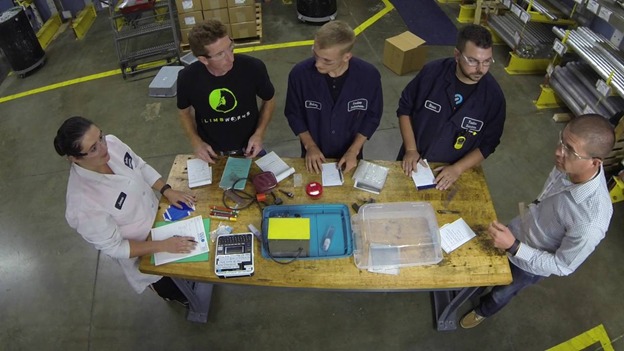
Reward great ideas: Recognizing the people who came up with the winning solution motivates each team member to do the same. Recognition can create a Kaizen culture where people start to think out of the box automatically, helping the company grow faster.
Arm them with the right tools: Modern cloud-based productivity and process documentation tools can make lean process implementation easier for everyone involved. Check out the section below for more on this.
Chapter 8: Four Cloud-Based Tools You Can Use to Implement Lean Processes in Your Company
In many ways, the latest crop of cloud-based productivity apps are the most lean thing to have happened to modern industry. They allow people to collaborate better, make distances irrelevant, enable better task tracking, and allow companies to keep all its information in one place.
Check out the following continuous improvement software that can help you launch and stay on top of your lean process improvement initiatives:
Kainexus
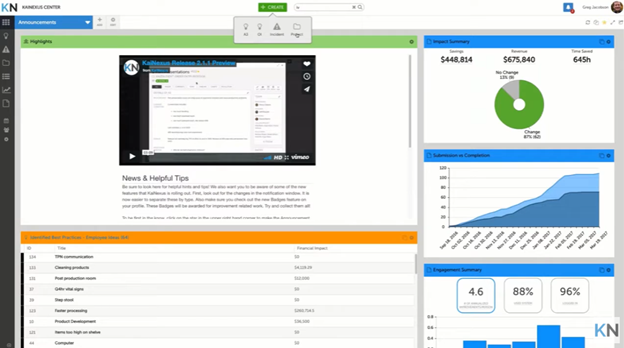
Features: Focuses on creating a Kaizen culture, highly flexible, software can be tailored to each company.
Price: Upon request
Free demo: Yes
Kainexus was founded by Dr. Gregory Jacobson and Matt Paliulis as undergrad students at Washington University. During his tenure at Baylor College of Medicine, Greg constantly came across processes that could be improved upon, but was frustrated by the lack of tools that could help him track his progress.
Greg and Matt thus started working together on a tool that could help healthcare companies improve their processes and so, Kainexus was born. At the core of Kainexus is the belief that every employee can help improve a company. Since it’s the onground employees who create outcomes, involving and empowering them helps the company grow.
The software is designed around maximum process visibility and collaboration. After login, you’re taken to a dashboard where you can manage all your activities. On the top is a notification bar that lets you know what everyone else is doing.
Kainexus makes lean process improvement a breeze. The software hits all the right notes as it focuses on creating a culture rather than just enforcing processes. It does so by involving as many people as possible. One of the main windows that managers can see in their dashboard is the engagement summary that reports how many people logged in, improvements contributed by each person and percentage of system used.
Reverscore
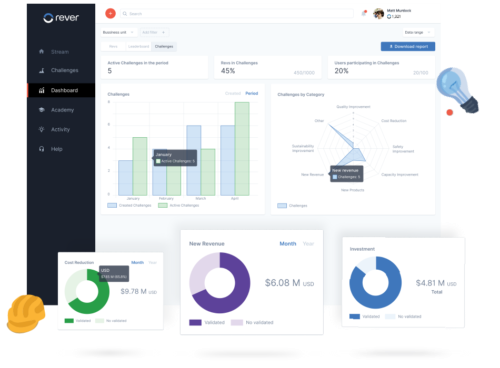
Features: Employee-centric design makes capturing new information easy, and the intuitive dashboard lets managers keep track of all Kaizen initiatives.
Price: Starts at $5 per person per month
Free trial: Yes
Reverscore presents itself as a frontline operations platform that empowers workers to create continuous improvement in their own specialized domains. In other words, the developers at Reverscore have taken an inverted pyramid approach to lean and Kaizen.
While the software allows management to keep a powerful, real-time track on all activities, the core emphasis is on helping employees do their best work and capture their experiences, much like IOT captures machine data.
Reverscore takes advantage of the fact that every worker today has a smartphone, which can enable them to share their ideas as well as track and report their progress in real time.
Employees can quickly take pictures or snapshots of events as they happen and share them with their team and manager through their software called Rever. The team can then discuss potential solutions and advise the employee on how to fix the problem. If found effective, the solution can be rolled out to other, similar departments.
KPI Fire
Features: KPI focused, makes tracking individual tasks easy, very minimalist design helps managers track progress better.
Price: Starts at $20 per feature per month
Free trial: Yes
KPI Fire isn’t a Kaizen-based continuous improvement tool per se but it fits perfectly in any such project. The tool is designed to create and track KPIs, which is central to any lean process initiative.
KPI tracking is fundamental to lean in a few key ways. Firstly, since new initiatives often require new KPIs, it’s hard to know which ones are worth tracking and which ones you should ignore. KPI Fire can make quick work of this problem. Secondly, keeping track of KPIs is hard enough for employees to keep track of since it’s all too easy to get so caught up with day-to-day tasks that they don’t realize when they’ve gone astray. Again, a tool like KPI Fire can help them stay on track through completion.
To ensure no one is distracted (not even by the software), KPI Fire has a very simple interface that can be made to only show KPIs and their completion rate.
SweetProcess
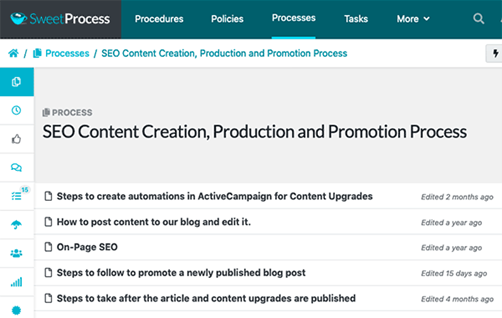
Features: Makes process documentation a breeze, each process can be turned into trackable checklists, powerful tracking features.
Price: $99/month for up to 20 members plus $5/month for every additional user
Free version: 14 days
Process improvement can only be done after process mapping. The more detailed your process documentation is, the more fine your refinements can be. While the above-mentioned tools can help you review your processes and even get everyone involved, their primary focus is on improvement.
SweetProcess is a process documentation tool that helps you get all your company’s process, procedure and policy know-how under one roof. All of these can also be organized, distributed and tracked by managers, team leaders, and employees through an intuitive interface.
Part of the reason why lean process improvement is so hard is that employees cannot capture real-time data or personal experiences on the fly. So, if an employee discovers new insight on the job that can add to the process, then they can edit the required checklists right there.
Chapter 9: Common Misconceptions About Lean Process Management

Leaning out your company processes can be interpreted in different ways by different stakeholders. More often than not, people feel they are being audited, or fear any changes that may happen as a result.
It is therefore vital to clear any misconceptions before you get started through a well-thought-out communication campaign. Consider the following.
It’s a one-time thing
Any improvement initiative runs the risk of looking like a “project.” And projects have start and end dates. It is therefore very easy for stakeholders to feel that your lean initiative is something they just have to get over with.
At the heart of lean thinking is the belief in continuous improvement. Even though each improvement does come in the form of small projects, they should in no way be treated as final. Each Kaizen project, if successful, should be built upon and improved further.
It’s all about cost-cutting
Lean process improvement does result in better savings as fewer resources required means less money spent, but that’s not its objective. Lean is primarily concerned with delivering better value to the end customer while reducing organization-wide waste. Bringing down operation costs is best looked at as a symptom rather than a goal here.
It only applies to manufacturing
Lean process thinking certainly has its roots in manufacturing, but since it’s primarily a philosophy, it can be used in virtually any industry. Even the tools can be applied with some modifications.
For instance, inventory waste in the case of marketing will be any assets and collateral that were developed but are sitting unused. Likewise, overproduction in software engineering will include any unnecessary product features. Software bugs can similarly be classified as defect waste.
It’s usually just a quick fix
Quick fixes have their place, and may even serve as a Kaizen inspiration, but they aren’t all there is to process improvement. If the improvement is time or location-specific and serves no value as an addition to the value chain, then it may be discarded.
The Apollo 13 example given earlier illustrates this point well. The astronauts had to make a crude CO2 scrubber out of things they had available. However, that doesn’t mean their method will become standard practice.
It standardizes work that takes away creativity
If anything, lean process improvement is all about enabling creativity which is foundational to Kaizen philosophy. The guiding principle is to turn great ideas into muscle memory, which is where standardization comes in.
An organization committed to lean processes will democratize ideation and encourage its workers to come up with unique solutions. However, that also means that most ideas won’t make it to the top.
Chapter 10: Three Lean Process Case Studies

Organizations have come up with creative ways to make lean process management work for them. Here are three such examples that show how lean methods can help companies grow:
The Power of Streamlining Business Operations
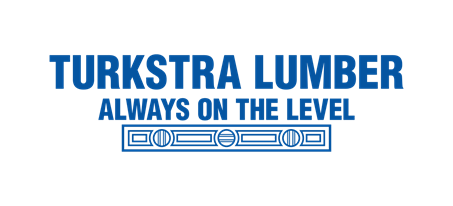
The Turkstra Lumber Company has been providing lumbering services to the Hamilton and Niagara regions since 1953. A family-owned business, the organization already had its processes and procedures down pat.
But Jamie Ramsden, business intelligence officer at Turkstra, saw the company could do a lot more by adopting some modern practices and streamlining its operations. The biggest pain point that Ramsden identified was that even though the company was working just fine, the operations weren’t as coordinated as they could have been.
A lean Six Sigma champion, Ramsden began exploring ways to implement modern lean methodologies to Turkstra’s management. Even though Excel Sheets proved to be helpful and the results were satisfactory, it proved to be a very top-down way of doing things with no feedback going back up.
Ramsden decided to use SweetProcess instead as he needed a tool that could enable more real-time collaboration and collect all their documentation in one place. His efforts paid off handsomely as his team now has perfect visibility into their day-to-day activities and can communicate seamlessly with each other.
Process Simplification Can Enhance Business Sales
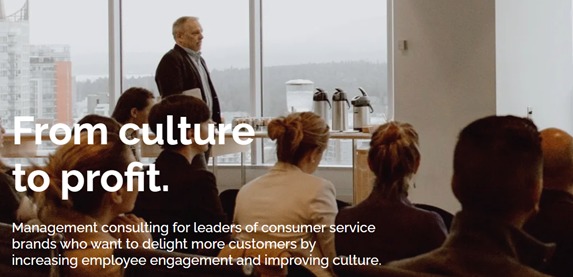
Processes in manufacturing are easy to understand since they are machine-driven. But how do you implement lean methods in a company that is almost entirely people-based? This was the challenge facing Rhys Green, CEO at TrailBlaze Partners, a business management consulting firm.
Mr. Green recalls one of TrailBlaze’s clients, 1-800-GOT-JUNK?, which helps remove unwanted material from people’s properties. 1-800-GOT-JUNK? had to deal with a lot of different people and the stuff they came across didn’t always fit in nice little boxes.
TrailBlaze experimented by first using plastic boxes, but then moved to reusable boxes to help simplify their loading and unloading process. But the most important change was cultural. The company simplified its customer-facing operations by making all interactions easier.
1-800-GOT-JUNK? went from a couple of million dollars a year business to over 100 million a year over the course of five years.
Transparency Promotes Efficiency

As the COO at Genome Medical, Kristin Ashcraft knows that their clients approach them for their commitment to quality, science-based healthcare. But she was also fully aware that trust in healthcare primarily comes from transparency.
Given the incredibly complex nature of genetic science, everyone from the customer to the team needs to have a clear understanding of what is required and what’s realistic. Ms. Ashcraft therefore focused heavily on increasing transparency throughout the company.
Not only did she build new processes by securing buy-ins from everyone involved, but also enhanced existing methods to create even better value for the end customer.
One of Ms. Ashcraft’s key goals was to ensure the company understood the before and after scenarios following a process overhaul. This was important to help the team members understand the importance of regular process reviews and improvements and, in turn, promote stakeholder buy-ins.
Conclusion
Many of the work cultures and methodologies becoming popular today are inspired by lean process improvement. BYOD, remote-working and shared office spaces are all examples that are firmly grounded in lean thinking. All of these try to remove waste from a company’s value creation process.
However, it is important to recognize the fact that what is now considered waste in lean was an important value-adding asset before new technologies made them irrelevant. This is why constant review of company processes in relation to new developments is so critical. As better methods and tools are proposed, tested and rolled out, older models will naturally become obsolete.
SweetProcess allows you to make just such a review of your existing processes. A cloud-based process documentation software, SweetProcess is designed around maximum collaboration and transparency. We offer a 14-day free trial, no credit cards required, so feel free to sign up and check it out.
Also, keeping track of available opportunities vis-à-vis your own goals and processes that can be hard, especially since you have to keep at it regularly. We’ve put together a questionnaire that you can use to help find process waste in your organization, while also helping you identify competitive and technological opportunities before your competitors.
Download our questionnaire here:

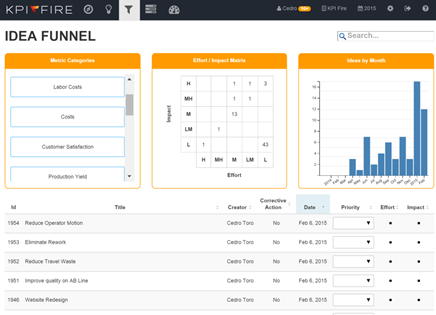

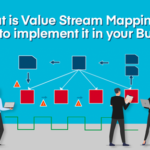


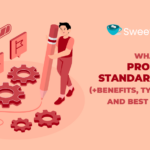
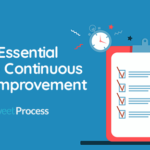



Leave a Reply